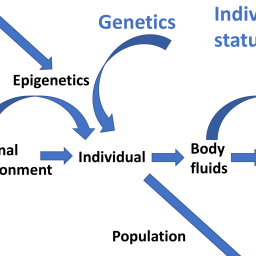The exposome – a new approach for risk assessment
Main Article Content
Abstract
Complementing the human genome with an exposome reflects the increasingly obvious impact of environmental exposure, which far exceeds the role of genetics, on human health. Considering the complexity of exposures and, in addition, the reactions of the body to exposures – i.e., the exposome – reverses classical exposure science where the precise measurement of single or few exposures is associated with specific health or environmental effects. The complete description of an individual’s exposome is impossible; even less so is that of a population. We can, however, cast a wider net by foregoing some rigor in assessment and compensating with the statistical power of rich datasets. The advent of omics technologies enables a relatively cheap, high-content description of the biological effects of substances, especially in tissues and biofluids. They can be combined with many other rich data-streams, creating big data of exposure and effect. Computational methods increasingly allow data integration, discerning the signal from the noise and formulating hypotheses of exposure-effect relationships. These can be followed up in a targeted way.
With a better exposure element in the risk equation, exposomics – new kid on the block of risk assessment – promises to identify novel exposure (interactions) and health/environment effect associations. This may also create opportunities to prioritize the more relevant chemicals for risk assessment, thereby lowering the burden on hazard assessment in an exposure-driven approach. Technological developments and synergies between approaches, quality assurance (ultimately as Good Exposome Practices), and the integration of mechanistic thinking will advance this approach.
Article Details

This work is licensed under a Creative Commons Attribution 4.0 International License.
Articles are distributed under the terms of the Creative Commons Attribution 4.0 International license (http://creativecommons.org/licenses/by/4.0/), which permits unrestricted use, distribution and reproduction in any medium, provided the original work is appropriately cited (CC-BY). Copyright on any article in ALTEX is retained by the author(s).


